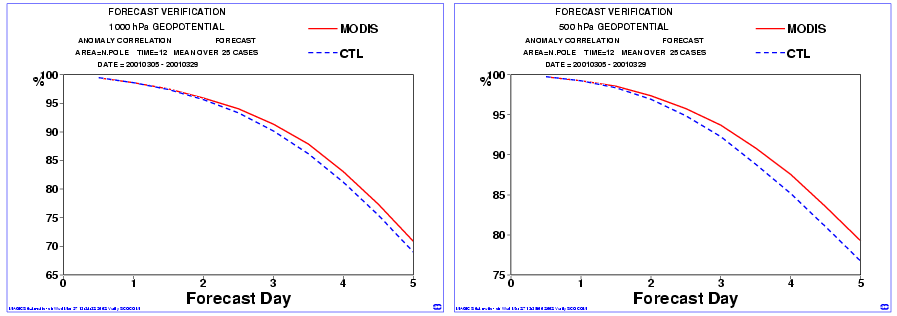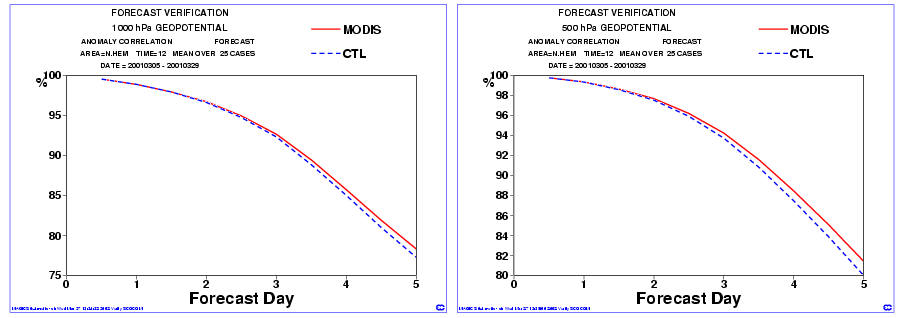The European Centre for Medium Range Weather Forecasting (ECMWF) demonstrated a positive impact of the MODIS polar winds on short-range forecasts. Niels Bormann, Lueder Von Bremen, and Jean-Noel Thepaut of ECMWF reported that there is a fairly large forecast improvement for the northern hemisphere, particularly over the Arctic but also in the mid-latitudes. Forecast improvement is quantified in terms of geopotential height forecast accuracy. There is also a positive impact on forecasts over Antarctica, though for the southern hemisphere the impact is neutral to slightly negative in this case study. This may be due to errors in the model first guess used in the retrieval. For both poles there is a strong impact on the mean wind analysis.


The figures above show the forecast scores (anomaly correlation) for the 1000 hPa (left) and 500 hPa (right) geopotential height over the Arctic (top) and Northern Hemisphere (bottom), for model forecasts with (red) and without (blue) the MODIS polar winds. The forecast score is the correlation between the forecast and its verifying analysis (model run with other data assimilated), expressed as a percent. The figures show that forecasts of geopotential height are improved when the MODIS winds are assimilated for the Arctic, Northern Hemisphere, and the Antarctic (not shown). This model impact study was performed by ECMWF.
The figures below show impact study results from the NASA Global Modeling and Assimilation Office (GMAO), performed by Lars Peter Riishojgaard and Yan-Qiu Zhu. The figures show the GMAO results for control (no MODIS winds) and MODIS (with MODIS winds) experiments, where the forecasts are compared to ECMWF analyses rather than their own verifying analyses.

Click here for an example of how errors can propagate from the Arctic into the upper midlatitudes.
